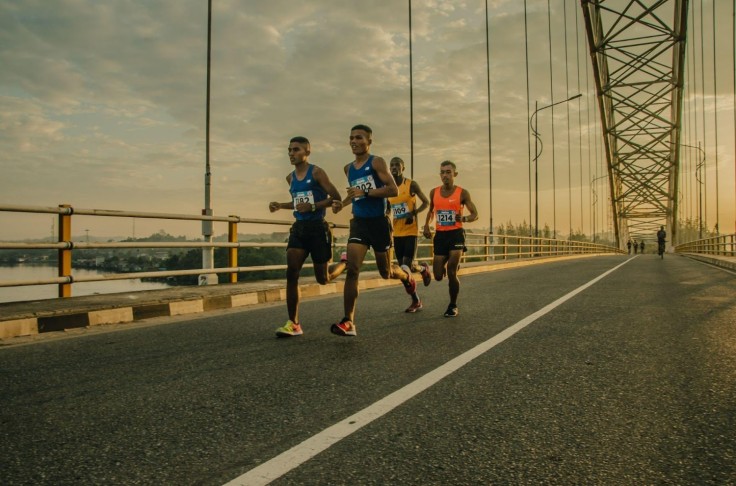Trainer Eugene Pallisco Explains What Marathoners Mean When They Talk About 'Hitting the Wall'
Created by
Marathon runners commonly talk about "hitting the wall" while they're running long races. Licensed trainer Eugene Pallisco says this term is used in the context of what happens to them when they simply run out of steam during a race.
Even if you're familiar with the phrase itself, you may not know how it feels to "hit the wall." If you're about to run a marathon or exercise a lot, it's important to understand the science behind "hitting the wall."
Eugene Pallisco will detail this below and how you can get through it.
The Science Behind 'Hitting the Wall'
"Hitting the wall" may be a common phrase that's thrown around, but it's actually based on real science. Generally speaking, it refers to reaching a barrier that prevents someone from performing as well as they would like to toward the end of a race, game, or exercise, for example.
What people experience when they "hit the wall" is their body being depleted of its stored glycogen. This is a carbohydrate stored in your liver and muscles that is used for energy.
Glycogen is the fuel source most easily available to your body to use during exercise. Because of this, the body prefers to use glycogen over other fuel sources during intense exercises.
As you exercise, though, your supply of glycogen goes down. In turn, your brain tends to want to stop trying as hard to preserve what glycogen you have left. This leads to negative thoughts that can prevent you from pushing through. In other words, "hitting the wall" doesn't just refer to a physical response in the body but rather a mental one, too.
How to Prevent This from Happening
Marathoners train hard to run long, intense races. This includes not just stretching and exercising but eating a specific diet as well.
One way that marathoners try to prevent themselves from hitting the wall is by "carbing up." You may have heard marathoners refer to this in the past.
On the day before a big race, runners will often load up on carbohydrates to prepare for the race. The reason they do this is simple -- it helps to preserve their glycogen stores.
Eugene Pallisco explains that the body burns two main sources to generate fuel -- carbohydrates and fat. The goal is to have your body tap into its fat sources instead of all its carbohydrate sources during the race.
If your body doesn't have enough carbohydrates as you're running the race, it will begin to tap into the glycogen reserves. When plenty of carbohydrates are present, it's easier for the body to tap into fat to use as fuel.
By combining pre-race runs and workouts with a proper diet, marathoners can actually help to prevent themselves from "hitting the wall" in the first place rather than trying to work through it.
About Eugene Pallisco
Fitness expert and licensed trainer Eugene Pallisco works in Dallas, Texas. Since he began working with motivational fitness mentors in high school, Eugene has devoted a significant amount of time to sculpting and molding his training philosophy, which is centered on improving others. Before starting his private training firm in the fitness industry, he gained more expertise by working one-on-one with gym patrons after beginning as a group fitness teacher.
© 2025 University Herald, All rights reserved. Do not reproduce without permission.








